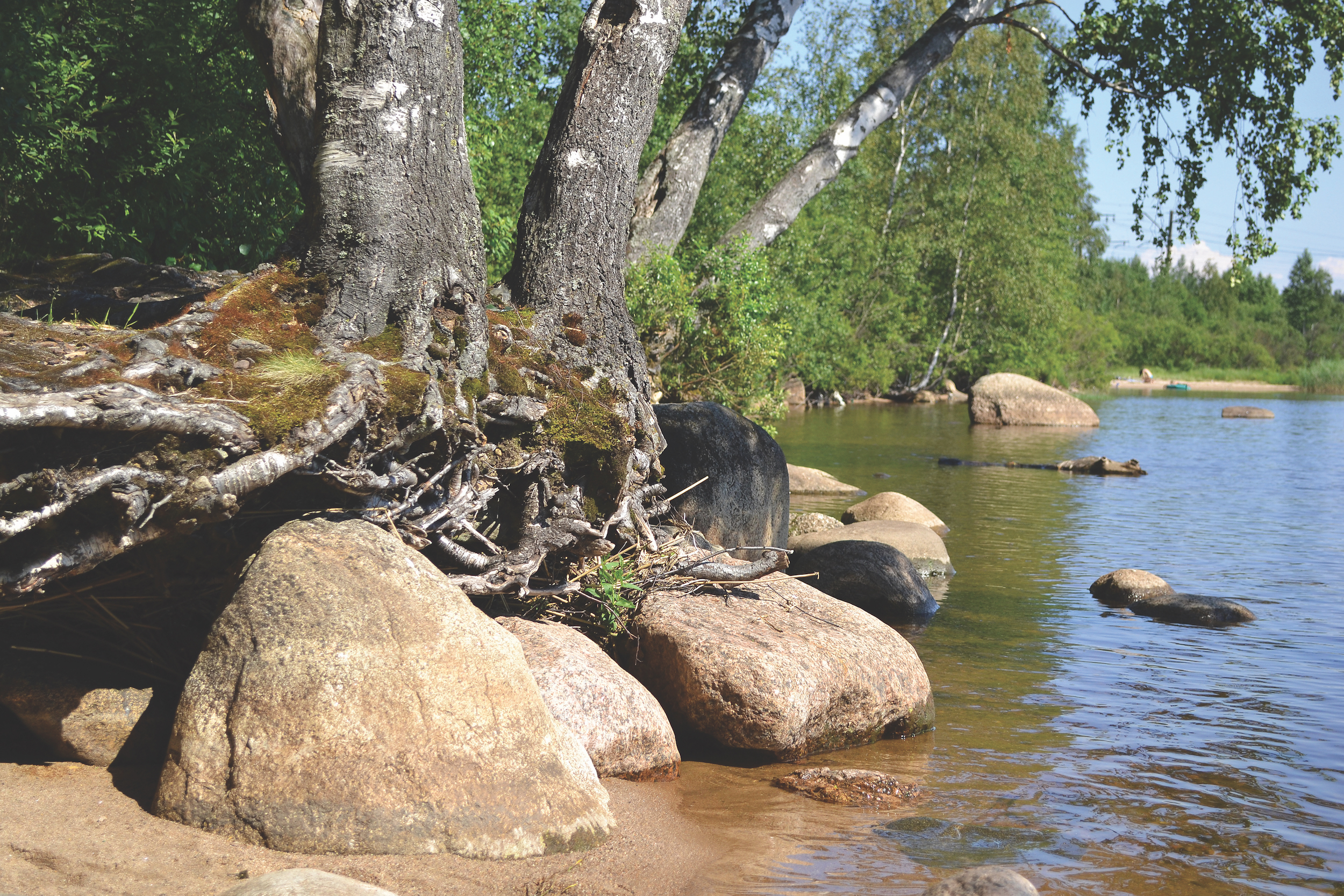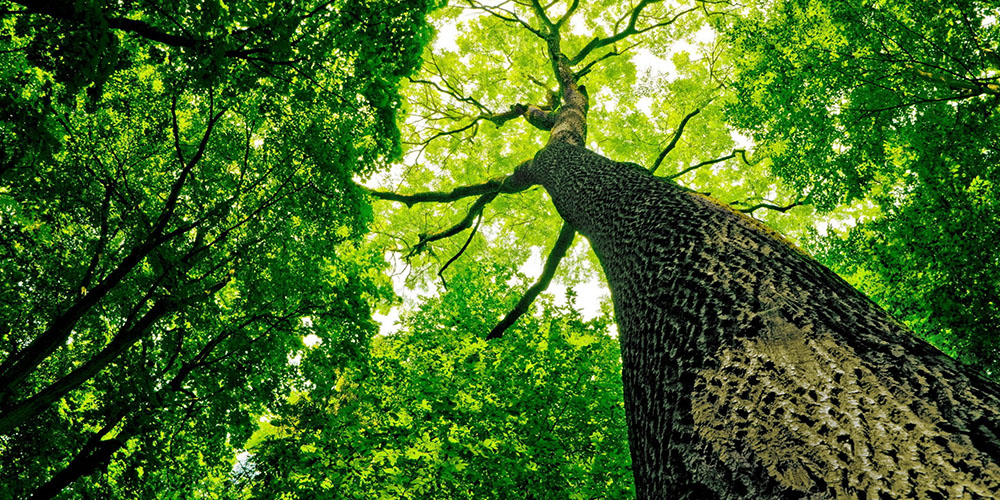Field, Forest, and Stream
Students conduct a field study of three different environments as they focus on sunlight, soil moisture, temperature, wind, water flow, plants, and animals in each environment. By comparing different environments, students will learn how nonliving elements influence living elements in an ecosystem.
Objectives
Students will
- Describe similarities and differences they observe in the nonliving (abiotic) and living (biotic) components of three ecosystems.
- Identify ways that abiotic components of an ecosystem affect the biotic components.
For the complete activity and more like this, purchase the Explore Your Environment: K-8 Activity Guide at Shop.PLT.org and/or attend a professional development training in your state.
Explore Your Environment: K-8 Activity Guide is a supplementary curriculum that is multi-disciplinary, with an emphasis on science, reading, writing, mathematics, and social studies.
Each activity displays explicit connections to practices and concepts expected by the following national academic standards so teachers can easily see where the materials will fit into their lesson plans:
- Next Generation Science Standards (NGSS)
- Common Core Toolkit, includes
- English Language Arts (CCSS.ELA)
- Mathematics (CCSS.MATH)
- College, Career, and Civic Life Framework for Social Studies (C3)
Our professional development further demonstrates these connections, as well as to state and local standards, contact your state coordinator.
EE Resources
Find the Birds
Find the Birds is a free educational mobile game about birds and conservation. Players explore real habitats and find real birds with images, video, and birdsong from the Cornell Lab of Ornithology’s Macaulay Library. Featuring realistic habitats, birds and conservation quests, Find the Birds is a way to introduce generations, young and old, to the... Read more »
iBiome Digital Games
The iBiome series of educational STEM games invites students to play while learning about environmental science. Build virtual ecosystems to study human impacts on the environment and explore what people can do to help.
Video: Wildlife Habitat
“Wildlife Habitat.” This 7:42-minute video describes how the habitat requirements for different animals are diverse and ever-changing, and how most Great Lakes States vertebrate species require or prefer at least one forest type for part of their lifecycle. It is one of a series of BeLeaf It or Not! videos by Michigan State University Extension,... Read more »
Can Plants Help Slow Soil Erosion?
This activity from Scientific American called Can Plants Help Slow Soil Erosion? helps students learn how soil erosion causes ecological problems, pollutes waterways, and increases the risk of natural disasters. Students complete an experiment to test the impact of methods to prevent soil erosion.
Into the Outdoors: Physical Science Fundamentals
Into the Outdoors empowers students and inspires critical thinking with over 150 videos! This video on Physical Science called “Ice Caves of Lake Superior” offers students the chance to understand fundamentals of the field. The video brings students inside Northern Wisconsin’s Ice Caves along the shores of the Great Lakes. Students will learn more about... Read more »
Fresh Solutions: Water Use and Conservation
Videos from California Academy of Sciences explore today’s environmental issues related to water use, from water shortage to waste water recycling. Intended for middle school students, these short videos come with background information for better understanding. You can extend the concepts covered by facilitating a student-led discussion or making connections to the Next Generation Science... Read more »
Junior Ranger Activity Book
In 2016, the National Park Service (NPS) celebrated a milestone birthday, 100 years! In celebration of its centennial, NPS created the Centennial Junior Ranger Activity Book. Explore the history of the National Park Service and complete fun activities with this printable book. While this book is geared for 4th-grade students, all are welcome to enjoy it.
Conservation Tales: The Cerulean Warbler
Have your students learn alongside Alyssa, a young girl who gets to see firsthand how scientific research can help protect endangered and vulnerable species. This Conservation Tales book focuses on the tale of the Cerulean Warbler, a small songbird endangered in Indiana and vulnerable in other states. The book’s author shadowed researchers at a scientific... Read more »
STEM Teaching Tools
The University of Washington’s Institute of Science and Math created Practice Briefs. These free articles highlight ways of working on specific issues that come up during STEM teaching. These briefs helps K-12 educators and administrators stay informed on teaching STEM issues, including STEM issues relating to teaching NGSS and implementing meaningful STEM learning. Each brief... Read more »
Interactive Water Cycle
The U.S. Geological Survey’s interactive water cycle shows the various stages, actors, and components of the water cycle. There are three different versions of this resource for various ages as well as several languages.
Find Nearby Trails and Parks
AllTrails is a free app that helps users discover the outdoors. Use it to find a hiking path suitable for children, to search for local places to bike or fish, or to plan a national park visit.
Geoscience Career Videos
The National Ground Water Association (NGWA) has put together two new videos that highlight potential paths for high school students interested in a geoscience career. The first video titled Groundwater Careers includes interviews with college students and professionals who discuss their field work, lab work, and passion for becoming an environmentalist. The second video titled Groundwater is Cool provides important facts,... Read more »
Ecology Food Chart
This document helps to expand the vocabulary in Field, Forest & Stream. The quest for taking a closer look at interconnections concludes with food chain and food web links.
Web Soil Survey from the USDA
This is a website that contains the web soil survey from the USDA.
EarthViewer App
Have you ever wondered what the Earth looked like 400 million years ago? With EarthViewer, a free iPad application, users can explore the Earth’s geologic history. The app tracks the planet’s continental shifts, changes in climate, and explores biodiversity levels over the last 540 million years. Combining visual analysis withe hard data, the app can help... Read more »
Unlock the Secrets in the Soil
Check out the infographic from the USDA’s Natural Resource Conservation Service! These infographics colorfully illustrate soil health: what soil is made of, what’s underneath, and what it does.
SoilWeb
A free app that can be downloaded onto Apple and Android devices. A more technical application, SoilWeb allows users to access GPS based, real-time USDA-NRCS soil survey data. Using your geographic location, this app retrieves soil type summaries, including soil series names and image profiles.
Encounters: Wild Explorer
The public radio program Encounters: Radio Experiences in the North explores the natural history of Alaska and the Far North. An accompanying website offers K-12 teachers links to the episodes as well as resources, such as slideshows, videos, and sound clips, introducing the animals and habitats of the regions: beavers, bears, caribou, humpback whales, boreal... Read more »
WildLab Bird
A free app that can be downloaded onto any Apple device (try iBird Lite for Android). Use WildLab Bird to learn the basics of bird identification. This application uses audio, photographs, maps, and the process of elimination to help identify over 200 bird species. Sightings can also be entered into a national bird watching database for... Read more »
Every Kid Outdoors – Free Passes for 4th Graders
Do you teach 4th grade students? Every Kid Outdoors was created so fourth graders and their families could get a chance to experience our federal parks, lands, and waters and discover our wildlife, resources, and history for free. Educators can visit https://everykidoutdoors.gov/educators.htm to get passes, download activities, or plan a life-changing field trip for your... Read more »
Login to download supporting materials such as appendices and teaching tips.
Login
 Get this Guide
Get this Guide
 Find Training
Find Training

